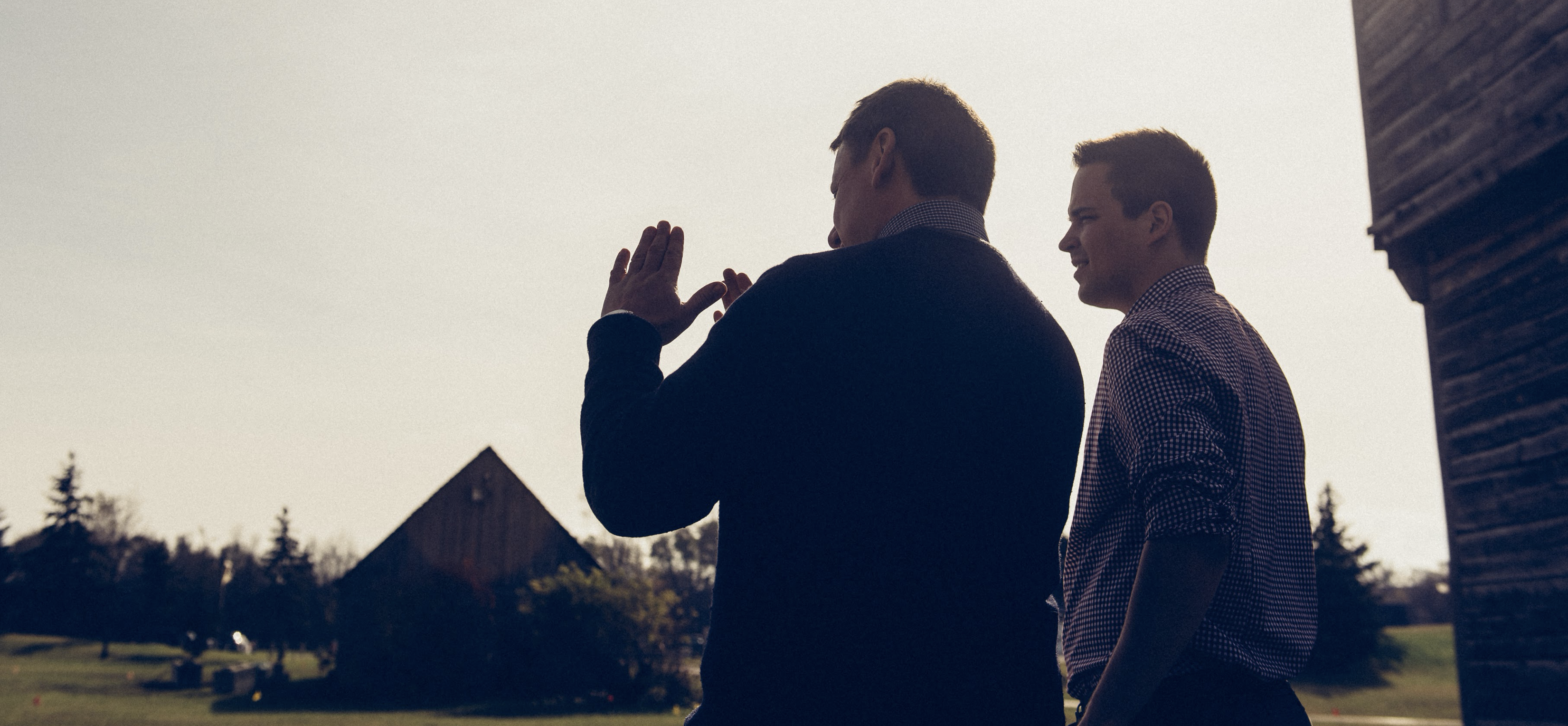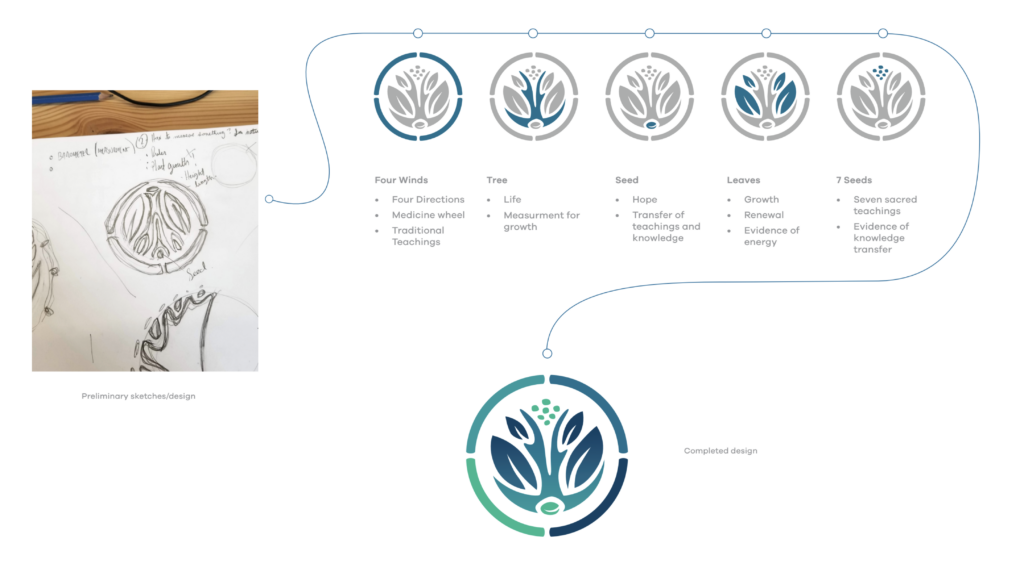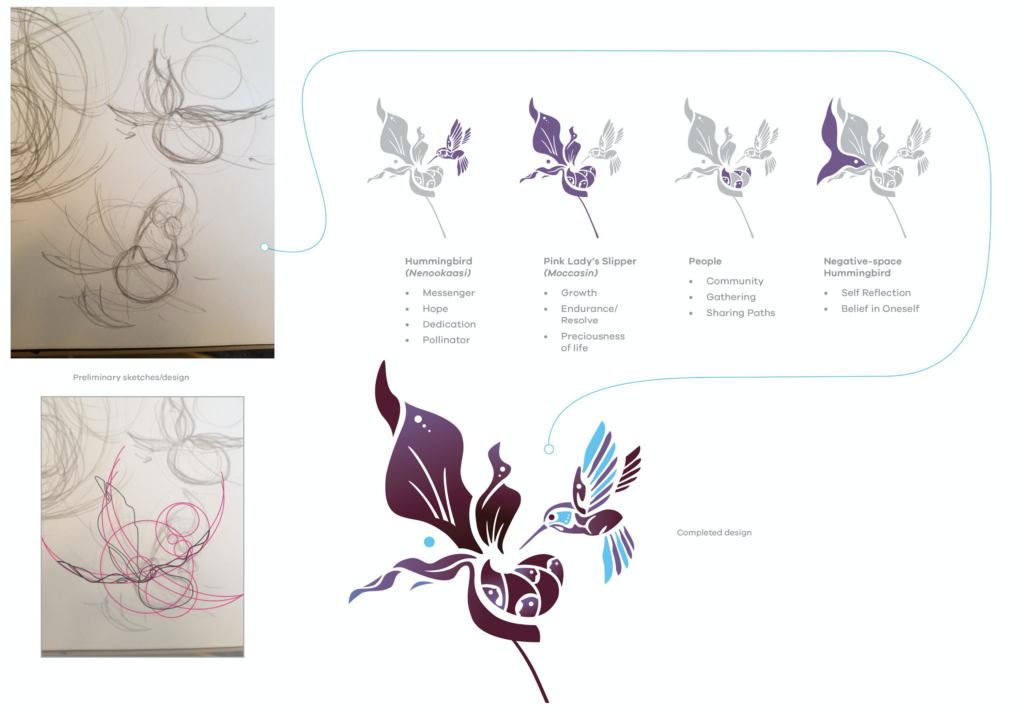Indigenous Design And Why It’s Different

“The advantage of Two-Eyed Seeing is that you are always fine tuning your mind into different places at once, you are always looking for another perspective and better way of doing things.”
~ Mi’kmaw Elder Albert Marshall
As artists and creatives, we believe in the need for good design.
Trained in contemporary design theory and pulling from our own experiences as artists allows us to tell the stories of our clients. We create logos, websites, fonts, brochures, apps and more by examining the user experience through a filter of global design principles.
For us, this means creating visual representations of the connections between people, places and things. We specialize in bringing brands to life: our work helps convey feelings, perceptions, memories, goals and promises about our clients, their organizations, their missions and their values.
And as Indigenous designers, we are also continuously immersing ourselves in the culture, carrying forward the experience of our own roots into every project we work on. Our connections to the land, history and ‘knowing’ – the understanding that the spirit lives within each one of us – is reflected in our process and our all designs.
In this way, we bring Indigenous culture to graphic design, marketing and communications, acting like a bridge between our non-Indigenous and Indigenous partners and clients.
“… Learning to see from one eye with the strengths of Indigenous knowledges and ways of knowing, and from the other eye with the strengths of Western knowledges and ways of knowing … and learning to use both these eyes together, for the benefit of all.”
~ Albert Marshall, Murdena Marshall & Cheryl Bartlett

Reflecting Indigenous Reality: How and Why We Design
We like to say that the work we do is often Indigenous – even when the concept, client or company is not.
As professional graphic designers, we are always working to support people’s brands and their relationships with their audience and customers. For each project, we strive to create brands that are authentic and true to that client.
There is an extra layer of consideration to our process however, when the designer is Indigenous or when the subject matter or client is Indigenous. In our experience, Indigenous Design is as much about the process as the product. It has its own voice and is both traditional and contemporary.
Indigenous Design draws on Traditional Knowledge and understands Oral Traditions, customs and beliefs. But it also involves applying modern design theory to culturally relevant and meaningful elements, placing them in modern contexts that move forward with client goals.
I do believe that the process is deeper than that of a non-Indigenous project. It is richer, with connections that come from within yourself, from within your being. It becomes personal at times, where one’s own interpretation, of a Bear for instance, makes a difference, and we have to reconcile with whose interpretation ends up being right.
~ Shaun Vincent

In his thoughtful, insightful reference book, Elements of Indigenous Style: A Guide for Writing By and About Indigenous Peoples, Gregory Younging put forward 22 principles for writing, editing and publishing Indigenous content. Younging, a member of the Opsakwayak Cree Nation in northern Manitoba, was a poet, scholar, author and publisher, and worked for many years as managing editor at Theytus Books, the oldest Indigenous publishing house in Canada.
And though his style guide is geared towards written works, it applies to many elements of what we do as Indigenous designers – including how and why we do it. In particular, Younging’s first principle offers us that “the purpose of Indigenous style is to produce works that:
· Reflect Indigenous realities as they are perceived by Indigenous Peoples
· Are truthful and insightful in their Indigenous content
· Are respectful of the cultural integrity of Indigenous Peoples.”
Indeed, as Indigenous designers, we balance form with function against backdrops of culturally relevant imagery. Indigenous Design is tied to the culture, people and our relationships with the land. It relies on values of inclusivity, authenticity, respect, representation and collaboration that are shared by First Nations, Inuit and Métis Peoples in Canada. There are universal themes, symbols and stories, but also unique histories and points of view, and both have a place in thoughtful design.
“Indigenous Designers are a bridge between Indigenous and non-Indigenous partners. Being this bridge, we are discovering that this is the heart of what we do.”
~ Shaun Vincent
UNDRIP, Two-Eyed Design and Other Standards for Indigenous Design
Art and design are constantly shifting fields, including Indigenous Design, and we must continually work to keep up. Our work and personal connections give us rich opportunities to talk, learn and grow in regard to our approach.
Ours is not a prescriptive view of Indigenous Design, but rather our own perspective. As active participants in the movement, we align and aspire to the standards set by the UN Declaration on the Rights of Indigenous Peoples (UNDRIP) and the International Indigenous Design Charter.
The Charter in particular is an extremely useful and succinct guide offering 10 best-practice protocols for non-Indigenous and Indigenous designers – and buyers of design – when the work involves the representation of Indigenous culture. For example, the protocols are inclusive of self-determination and deep listening, values we also adhere to in our approach, and the protocols also speak to the legal and moral considerations of Indigenous Design.
We also aspire to the Mi’kmaw concept of Etuaptmumk or Two-Eyed Seeing, introduced as a guiding principle by Elder Albert Marshall to “bring together our different ways of knowing to motivate people, Aboriginal and non-Aboriginal alike.”
In particular, we are drawn to using and valuing this concept as a foundation for “Two-Eyed Design”, drawing on Etuaptmumk to “learn to see from one eye with the strengths of Indigenous knowledges and ways of knowing, and from the other eye with the strengths of Western knowledges and ways of knowing … and learning to use both these eyes together, for the benefit of all” (The Institute for Integrative Science & Health).
And as Elder Albert indicates, Two-Eyed Seeing is a gift of multiple perspectives, and one that is treasured by many Indigenous Peoples – and we would add, by many Indigenous designers.

Storytelling: The Fabric of our Daily Design Life
Ultimately, creating memorable, iconic brands and designs is about storytelling – and Indigenous culture brings a long storytelling tradition to each and every one of our designs.
Weaving traditional, symbolic elements into contemporary, custom design, we aim to reflect what is real and meaningful to our clients, their customers, participants, stakeholders and community members, and also to ourselves.
Similarly, each client has a story, and we carry those with us too. Each project informs our conversations and work day-to-day, shaping and cultivating our perspective to ground and inspire our designs.
Or, as writer and artist Leanne Betasamosake Simpson told the audience in her 2020 Kreisel Lecture on how the Beaver, Amik, offers lessons in how to live connected to the world around us (A Short History of the Blockade: Giant Beavers, Diplomacy & Regeneration in Nishnaabewin):
“My people are constant storytellers throughout the day and throughout the seasons. Stories are the fabric of daily life.”
Our roots are our stories, and they inform and inspire our approach to graphic design.
Within the scope of each project we take on then, is an opportunity for us and our clients to champion the Indigenous community alongside the creation of enduring, meaningful and visually engaging design.
